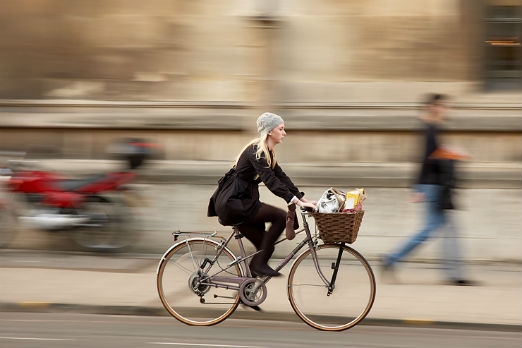That’s why we’re calling for a national transport policy to put smarter travel first.
What is smarter travel?
Smarter travel means moving away from the out-dated transport of the past, where we relied on building more roads to make way for more vehicles, occupied by fewer people.
Congestion and harmful pollution are not tackled by building bigger roads (which actually leads to more congestion and pollution) but through embracing the five key principles of smarter travel.
Principle 1: Start by reducing demand for the most polluting, inefficient transport.
Many journeys that get made in England aren’t at all smart. Houses are often built in places that are too hard to reach by public transport and shops are built on the edges of towns that make it too far or dangerous for people to walk or cycle. This leads to a lot of unnecessary driving.
The first way to start putting smarter travel first is by doing as much as possible to reduce the number of journeys that need to be made.
Some of the ways we can do this are by:
- planning places to make walking and cycling easier and safer
- ending car dependent housing and out-of-town shopping developments
- expanding use of technology such as broadband, cloud computing and video conferencing to enable more people to work from home or close to their home
Principle 2: Provide people with alternatives to the most polluting, inefficient transport
Once we have reduced the number of unnecessary journeys that are made we need to make it as easy, affordable and safe as possible for short journeys to be made without needing to use a car.
40% of car journeys are under 2 miles. At such short distances there are many other types of transport that could be used such as walking, cycling, buses, trams and trains.
Some of the best ways to help people onto other types of transport are by:
- informing people about smarter alternatives for their journeys
- providing high quality and safe walking and cycling routes
- prioritising walking, cycling and public transport over cars
- reducing speed limits in rural and urban areas
Principle 3: Make existing transport more efficient
After unnecessary journeys have been cut out and the journeys that can be made on better types of transport have been moved onto them, then existing transport should be made more efficient. This will help to tackle congestion and lessen harmful pollution.
Some of the best ways to make existing transport more efficient include:
- smart cards/integrated ticketing
- railway electrification
- eco-driving
- car and van sharing and car clubs
- ultra-low emission vehicles (ULEVs)
- connected freight deliveries
Principle 4: Increase capacity of powered transport
After following the first three principles, if there is not enough capacity for people to make the journeys that need to be made, then capacity increases should be made. This should prioritise the most efficient and least harmful options, such as:
- light rail and trams
- heavy rail
- high speed rail
Principle 5: Increase road capacity only as the option of last resort
If, after all the other principles have been followed there still isn’t enough capacity for people to get around, then, and only then, should increasing road capacity be considered as an option.




